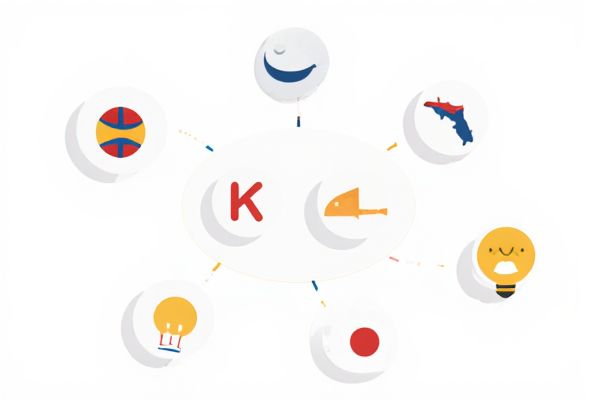
Explore endless opportunities to expand your language skills with our online random language generator tool, designed to spark curiosity and enhance learning. Simply select your preferences and receive instant, diverse language prompts tailored to your level and interests. Boost your vocabulary and cultural understanding effortlessly, making language learning exciting and accessible anytime, anywhere.
Online tool for random language generator to learn
Here are a few sample lists prepared for you to use with the random language generator. You can enter your own custom list as well. With just one click, the generator will provide a randomized list and select one value for your use.Data Source
Single Result
Multiple Results
Introduction to Random Language Generators
Random language generators create synthetic languages using algorithms that combine linguistic elements like phonemes, grammar rules, and vocabulary patterns. These tools help linguists, language learners, and game developers explore language structures and experiment with new communication forms. By analyzing generated languages, users can enhance their understanding of syntax, morphology, and phonetics in natural and constructed languages.
Benefits of Using Random Languages for Learning
Using a random language generator exposes learners to diverse linguistic structures and vocabulary, enhancing cognitive flexibility and problem-solving skills. This method supports language acquisition by encouraging curiosity and reducing the predictability of study routines, which increases engagement and retention. Incorporating random language practice helps learners develop adaptive communication abilities applicable across multiple languages and cultural contexts.
Key Features of Effective Language Generators
Effective random language generators feature extensive vocabulary databases and adaptable grammar structures to simulate authentic linguistic patterns. Advanced algorithms ensure diversity and contextual relevance, enhancing learning engagement and retention. User customization options allow tailoring difficulty levels and language complexity, optimizing the learning experience.
Popular Random Language Generator Tools
Popular random language generator tools like Duolingo Random Phrase Generator, Babbel's Language Randomizer, and Memrise's Word Shuffle help learners practice diverse vocabulary and sentence structures. These tools use algorithm-driven selection to provide spontaneous language exercises, enhancing retention and adaptability. Frequent use of such generators accelerates language acquisition by exposing users to unpredictable linguistic contexts and real-time translation challenges.
Enhancing Vocabulary Retention with Generators
Random language generators significantly enhance vocabulary retention by exposing learners to diverse words and contexts, promoting active recall and long-term memory encoding. These tools tailor word frequency and usage patterns based on user proficiency, optimizing the learning curve and reinforcing neural connections associated with language acquisition. Incorporating spaced repetition algorithms and contextual sentence generation further boosts retention efficiency by simulating natural language use and minimizing cognitive overload.
Customizing Language Levels for Learners
Customizing language levels in a random language generator allows learners to target vocabulary and grammar complexity appropriate to their proficiency, enhancing comprehension and retention. By adjusting difficulty settings, users can focus on beginner, intermediate, or advanced skills, promoting gradual progression and confidence in language acquisition. This tailored approach increases engagement and effectiveness by aligning practice materials with individual learning goals and abilities.
Integrating Generators into Study Routines
Integrating random language generators into study routines enhances vocabulary acquisition by exposing learners to diverse linguistic structures and uncommon words. These tools simulate real-life language usage scenarios, improving contextual understanding and retention through interactive practice. Regular use of generators reinforces grammatical patterns, accelerating fluency and comprehension in the target language.
Improving Pronunciation Using Generated Content
Random language generators provide diverse and context-rich content that enhances pronunciation practice by exposing learners to varied phonetic patterns and intonations. Utilizing generated sentences enables focused repetition of difficult sounds, improving muscle memory and accent accuracy through active engagement. Immediate feedback tools integrated with these generators further refine pronunciation by highlighting errors and suggesting targeted corrections.
Tracking Learning Progress with Generators
Random language generators provide dynamic sentence examples that enhance vocabulary acquisition and grammar practice. Tracking learning progress with generators allows learners to monitor improvements in language comprehension and fluency by analyzing generated text complexity and response accuracy over time. Integration of progress metrics with adaptive generator algorithms ensures personalized learning paths and sustained motivation.
Future Trends in Language Generation Tools
Future trends in language generation tools emphasize enhanced contextual understanding through advanced AI models like GPT-4 and beyond, enabling more accurate and personalized random language generation for learners. Integrations of multimodal capabilities, combining text, speech, and visual inputs, are set to revolutionize immersive language acquisition experiences. Continuous improvements in natural language processing will facilitate dynamic curriculum adaptation, ensuring tailored and efficient language learning pathways.
 azrandom.com
azrandom.com